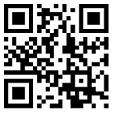Testing standards: EN 55032, EN 55024, EN 61000-3-2, EN 61000-3-3
Electromagnetic compatibility directive: 2014/53/EU
Test the EMI part of the project:
1. Conduction (CE) 0.15~30MHz EN 55032
2. Telecom end conduction (ISN) 0.15~30MHz EN 55032
3. Space radiation (RE) 30MHz~6GHz EN 55032
If the maximum frequency of the internal source of the product is lower than 108MHz, the measurement only proceeds to 1GHz;
If the highest frequency of the internal source of the product is between 108MHz and 500MHz, the measurement proceeds to 2GHz;
If the highest frequency of the internal source of the product is between 500MHz and 1GHz, the measurement proceeds to 5GHz;
If the highest frequency of the internal source of the product is higher than 1 GHz, the measurement is carried out to 5 times or 6 GHz of the highest frequency, whichever is smaller;
4. Harmonic current: Standard EN 61000-3-2 rated voltage range is AC220~240V;
This project tests the infinite value of products with rated power of 75W and below, no need to test.
5, voltage fluctuations, flicker (Flicker): standard EN 61000-3-3 rated voltage range is AC220 ~ 240V products, this item is required.
Test limit requirements: short-term flicker value Pst ≤ 1.0; long-term flicker value Plt ≤ 0.65; relative steady-state voltage change dc ≤ 3.3%; maximum corresponding voltage change dmax ≤ 4%.
Test item EMS part: The following EMS test levels are standard general requirements.
1. Electrostatic immunity (ESD) standard: EN 55024 (citing IEC61000-4-2);
Performance criteria: Class B;
Contact discharge: ± 4kV; each discharge point has 25 polarities;
Air discharge: ±8kV; each discharge point has 10 polarities;
2. Radiation immunity (RS) standard: EN55024 (citing IEC61000-4-3);
Performance criteria: Class A;
Frequency range: 80~1000MHz frequency and above;
3. Electrical fast transient burst (EFT) standard: EN55024 (citing IEC61000-4-4);
Performance criteria: Class B;
AC power input: 1kV. Repeat frequency 5 kHz;
DC power input: 0.5kV. Repeat frequency 5 kHz;
Signal port and telecom port: 0.5kV. Repeat frequency 5 kHz (connected to the interface port of the data cable specified by the manufacturer but not expected to be 3 m) This test is not required);
4, surge / lightning strike (Surge)
Performance criteria: Class B;
Test specification: AC input: 1.2/50 (8/20) combined wave; line-line: 1kV; line-ground: 2kV
DC input: 1.2/50 (8/20) combined wave; 0.5kV (only for ports that may be directly connected to the outdoor cable according to the manufacturer's specifications)
Signal port and telecom port: 10/700 waveform; 1kV or 4kV (only for ports that may be directly connected to the outdoor cable according to manufacturer's specifications)
The voltage applied to the unprotected port is typically 1KV);
5. Conducted immunity (CS)
Performance criteria: Class A
Test voltage: 3V/10V
6, power frequency magnetic field immunity (MS)
Performance criteria: Class A;
Test voltage: 3A/m; 10A/m; 30A/m; 100A/m;
7, voltage drop, short-term interruption of immunity (Dips)
Performance criteria: Class B / Class C;
EMS performance criteria
Performance criterion A:
The equipment should continue to work as expected without operator intervention. When the equipment is used as intended, performance below the manufacturer's specifications is not allowed.
Level performance degradation or loss of functionality. Performance levels can be replaced with permissible performance degradation. If the manufacturer does not specify a minimum performance level and allows
The performance is reduced, which can be found in the product manual or technical documentation, and the user has reason to require the equipment used to meet this requirement.
Performance criterion B:
After the start of the test, the equipment should continue to work as expected without operator intervention. When the device is used as intended, after the disturbance is applied,
Performance degradation or loss of functionality below the manufacturer's specifications is not permitted. Performance levels can be replaced with permissible performance degradation. During the trial,
Performance degradation is allowed. However, after the test, the working status should not be changed and the stored data should not be lost. If the manufacturer does not specify minimum
The level of energy and the permissible performance degradation can be found in the product manual or technical documentation, and the user has reason to require the equipment used to achieve this.
Provisions.
Performance criterion C:
Allows for loss of functionality that can be self-healing or that can be restored by the user following the manufacturer's instructions. Stored in non-volatile memory
The function and/or information protected by the backup battery should not be lost.





